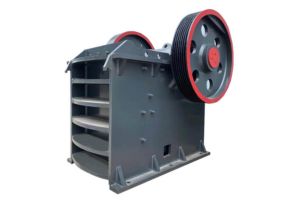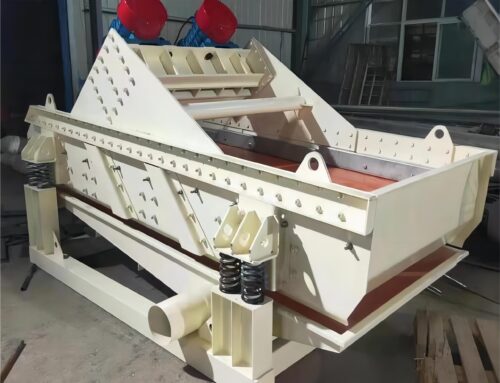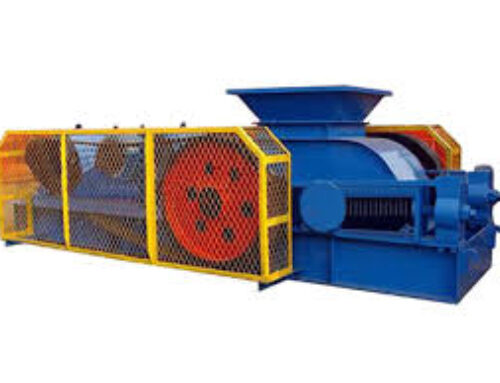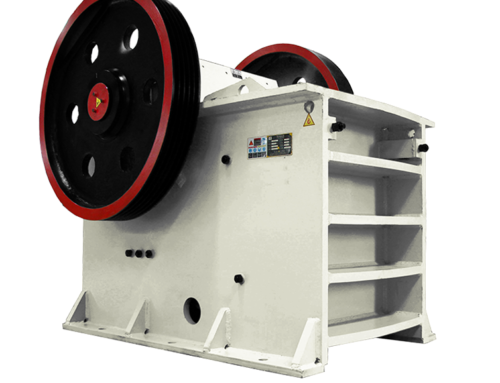In the field of mining, mining crusher is an indispensable and important equipment, which can crush the large ore into the required particle size, and provide convenience for the subsequent processing and transport. However, in the face of the many mining crusher models and brands on the market, how to choose the right equipment has become a problem for many mining enterprises. The following will provide you with detailed information on how to choose the right mining crusher from various aspects.
一. Clarify production needs
Firstly, you need to clarify your production needs. Consider the following questions:
Nature of materials to be processed
Types of materials: Different ores have different physical and chemical properties, such as hardness, density, humidity, viscosity and so on. For example, for harder ores, it is necessary to choose a crusher with stronger crushing capacity and abrasion resistance; for materials with higher humidity or higher viscosity, it may be necessary to choose a crusher with an anti-clogging device.
Particle size distribution of the material: Understand the initial particle size of the material and the required final particle size, in order to determine the required crushing ratio and crushing chamber size of the crusher. If the particle size distribution of the material is wide, it may be necessary to choose a crusher with multi-stage crushing function.
Material throughput requirements: According to the production plan, determine the processing capacity of the required crusher. Processing capacity is usually measured in tonnes per hour, taking into account the nature of the material, crushing size requirements and production continuity.
Working environment conditions
The size of the space in the workplace: the size of the crusher should be compatible with the space in the workplace to ensure that the equipment can be installed and operated normally. At the same time, the space for maintenance and overhaul of the equipment should also be considered.
Temperature, humidity and dust concentration of the working environment: If the working environment has a high temperature, high humidity or high dust concentration, you need to choose a crusher with corresponding protective measures, such as high temperature resistance, moisture-proof, dust-proof and other properties.
Safety requirements of the working environment: ensure that the crusher meets the relevant safety standards and norms, such as explosion-proof, anti-static and other requirements.
二. Understand the type and characteristics of the crusher
At present, there are mainly the following types of common mining crushers in the market:
Structural characteristics: It consists of fixed jaw plate, movable jaw plate, eccentric shaft, flywheel, elbow plate and so on. It adopts the principle of extrusion crushing, and achieves the crushing of materials through the periodical approaching and moving away of the movable jaw plate to the fixed jaw plate.
Scope of application: It is suitable for coarse crushing of large hard materials, and has the advantages of simple structure, reliable work and convenient maintenance. However, the crushing ratio is relatively small and the product size is not uniform.

The core component of the Double Roll Crusher is two cylindrical rolls mounted horizontally parallel to each other on the frame. The surface of the rolls can be classified as glossy, toothed or grooved depending on the material to be processed. If the crushing of hard, abrasive materials, often choose the glossy roller, glossy roller on the crushing of materials is mainly crushing and grinding effect; for the need for greater friction and shear to break the material, will choose the tooth surface or groove surface of the rollers. Roller support bearings: used to support the rotation of the rollers, to ensure the stability and reliability of the rollers in the working process, bear the weight of the rollers and the impact generated in the crushing process.
Double roll crusher is suitable for mining industry, electric power industry, chemical industry, building materials industry, metallurgical industry. It is suitable for crushing materials with medium hardness and below. For materials with large hardness, although it can also be crushed, it may lead to faster wear of the roll surface, affecting the service life of the equipment and crushing efficiency. The compressive strength of the materials generally does not exceed 320 MPa (some models can handle materials with compressive strength not exceeding 800 kg per cubic metre). In terms of humidity and viscosity: the crushing effect is good for materials with moisture content ≤ 15%, but viscous materials are easy to block the crushing space, and special attention needs to be paid to material conveying and cleaning of the crushing chamber when dealing with viscous materials.

Grading Crusher makes full use of the strength characteristics of rocks, coal, coke and most other rock mineral materials (i.e. compressive strength>shear strength>tensile strength), and achieves the purpose of crushing mainly through the action of shearing, piercing and splitting on the materials. After the mixed material enters the crusher, the material is discharged between the two teeth and between the comb plates on the side wall, and the product size is controlled by this gap, so that no oversized particles will be discharged. Grading Crusher is suitable for mining industry: it is a commonly used crushing equipment in coal, metal and non-metallic mines, used for coarse and intermediate crushing of raw coal and ores, such as grading crushing of coal, crushing of extra-large pieces of coal, as well as crushing of non-metallic ores such as limestone, gypsum, slag and so on.
Metallurgical industry: it can be used in the crushing operation of coke, coal for coking, sintered ore, etc.
Chemical industry: it is suitable for the crushing of chemical raw materials such as silicate, glass, clay and so on.
Power industry: it is used to crush coal for power, power plant slag, etc., to provide suitable particle size of fuel for thermal power generation or to deal with waste residue.
Environmental protection field: It is also applied in the crushing and grading treatment of municipal rubbish and industrial solid waste, which helps to realise the reduction and resourcefulness of waste.
In terms of material characteristics, it is suitable for the crushing of materials below medium-hard, with certain limitations on the compressive strength of the materials. Generally, it can be used for the crushing of materials with a compressive strength of ≤300MPa (e.g., coal, coke and other medium-hard materials are more effective). For materials with greater hardness, although it can be used for the crushing of such materials, it may result in the accelerated wear of the crushing teeth, which affects the service life of the equipment and the efficiency of crushing.

三. Examine the performance indicators of the crusher
When choosing a mining crusher, the following performance indicators need to be examined:
Crushing ratio
Crushing ratio refers to the ratio of the feed size and discharge size of the crusher. The larger the crushing ratio, the stronger the crushing capacity of the crusher. When choosing a crusher, you should select the equipment with appropriate crushing ratio according to the actual production demand.
Processing capacity
Processing capacity refers to the amount of material that can be processed by the crusher in a unit of time. The larger the capacity, the higher the productivity of the crusher. Factors affecting the capacity mainly include the nature of the material, crushing ratio, feed size, discharge size, etc. When selecting a crusher, it is important to choose a crusher with the right crushing ratio. When choosing a crusher, you should select the equipment with appropriate processing capacity according to the actual production demand.
Product size
Product size refers to the size of the discharged material from the crusher. The product size should meet the requirements of subsequent processing and transport. Factors affecting the product size are mainly the type of crusher, crushing ratio, feed size and discharge size. When choosing a crusher, you should select the equipment that can produce the required particle size products according to the actual production demand.
Reliability and durability
Reliability and durability is one of the important indicators of crusher quality. A reliable crusher should have stable performance, low failure rate and long service life. The reliability and durability of a crusher can be examined from the following aspects: the manufacturing process of the equipment, the quality of the materials, the brand and quality of the key components, and the after-sales service. Choosing brands and manufacturers with good reputation and credibility can improve the reliability and durability of the equipment.
Energy consumption and noise
Energy consumption refers to the energy consumed by the crusher during operation. The lower the energy consumption, the lower the operating cost of the crusher. Noise is an important factor that affects the working environment and the health of operators. Choosing a crusher with low energy consumption and low noise can improve the comfort and safety of the working environment.
四. Consider the price and cost-effectiveness of the equipment
Price is also an important consideration when choosing a mining crusher. The price of different brands, models and configurations of crushers varies greatly, and you need to choose according to your actual needs and budget.
Price factors
Manufacturing cost of the equipment: including material cost, labour cost, research and development cost. Generally speaking, the price of equipment with high quality materials and advanced manufacturing process is higher.
Brands and manufacturers: well-known brands and competent manufacturers usually have higher product quality and after-sales service level, but the price is also relatively high.
Market supply and demand: when there is a greater demand for a certain model of crusher in the market, the price may increase; on the contrary, the price may decrease.
Cost-effective consideration
Cost-effective refers to the ratio between the performance of the equipment and the price. When choosing a crusher, you should not only focus on the price, but also consider the performance, quality, after-sales service and other factors to choose a cost-effective equipment. You can choose the most suitable equipment for yourself by comparing the products of different brands and manufacturers and understanding the market situation. At the same time, you can also consider the energy-saving nature of the equipment, maintenance costs and other factors in order to reduce the long-term cost of use.
In short, choosing the right mining crusher requires comprehensive consideration of production needs, crusher type and characteristics, performance indicators, price and cost-effective, suppliers and after-sales service and many other aspects. Only by choosing a suitable crusher for your production needs and cooperating with a reliable supplier can you ensure the normal operation of the equipment, improve the production efficiency and product quality, and create greater value for the development of the enterprise.










